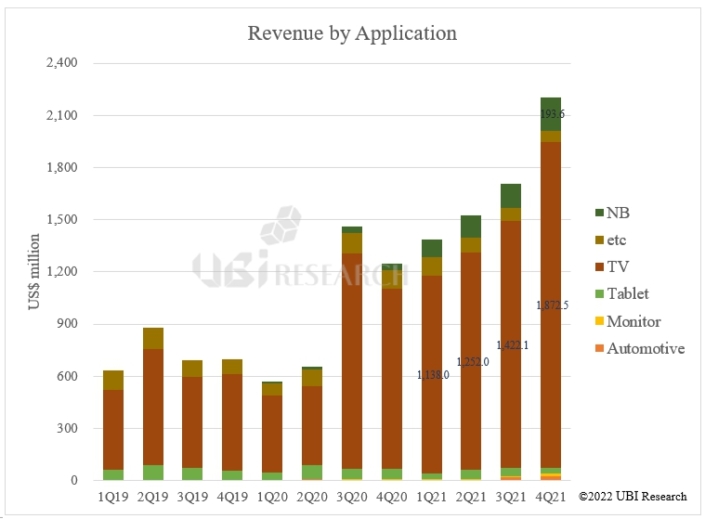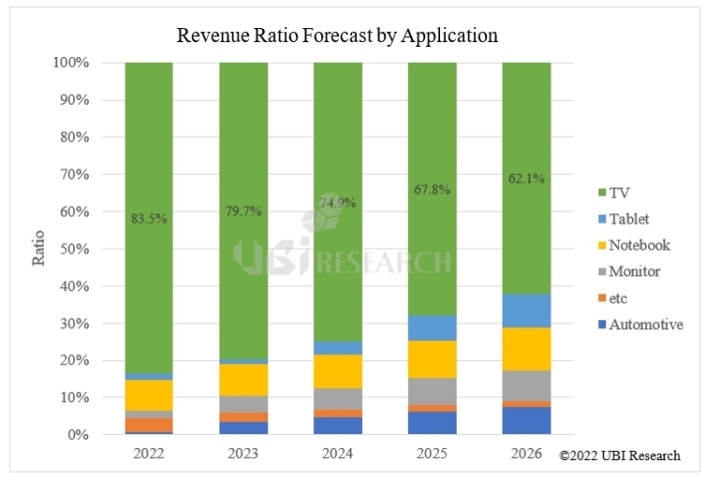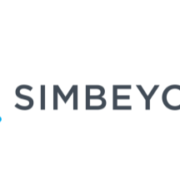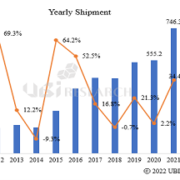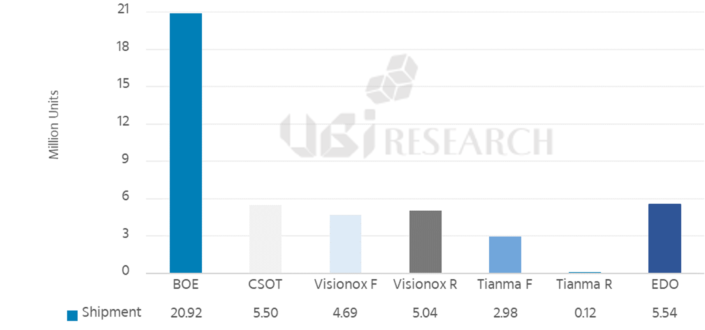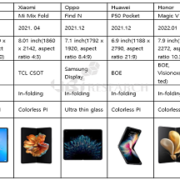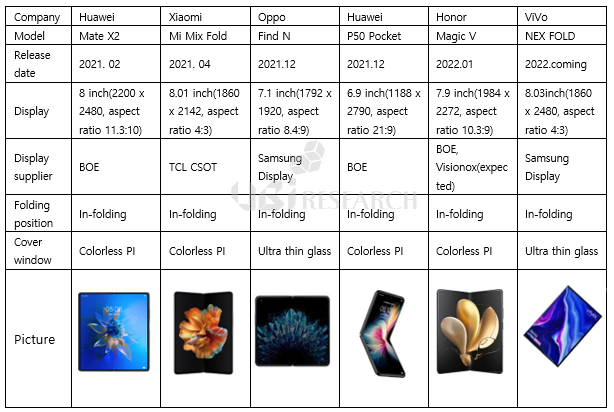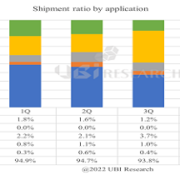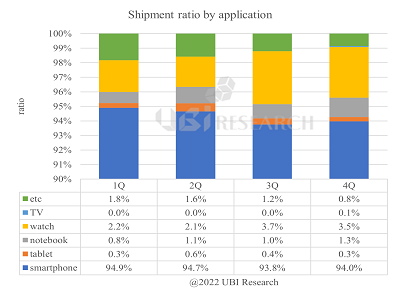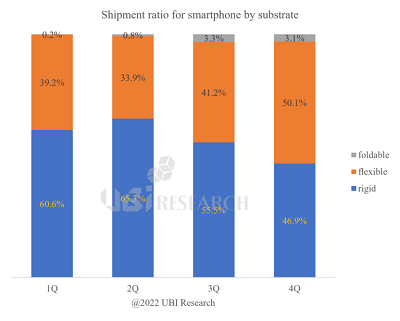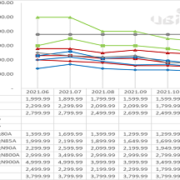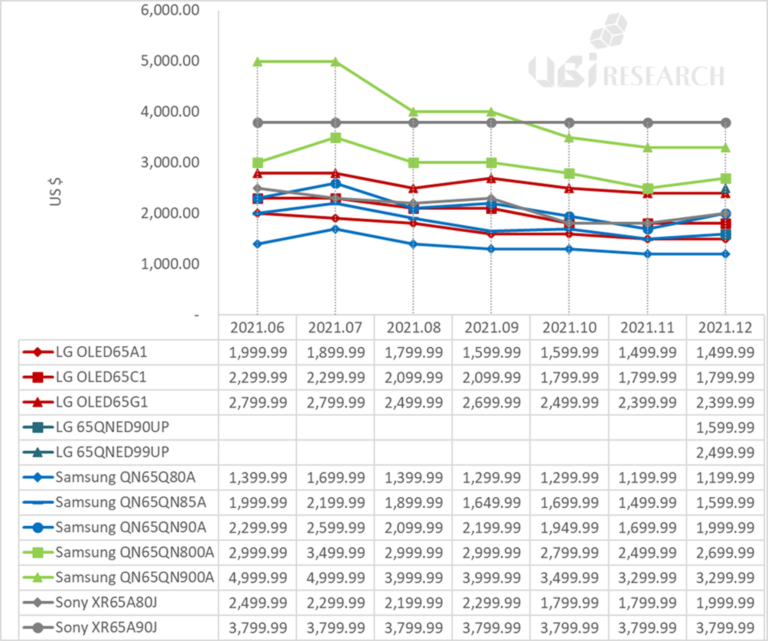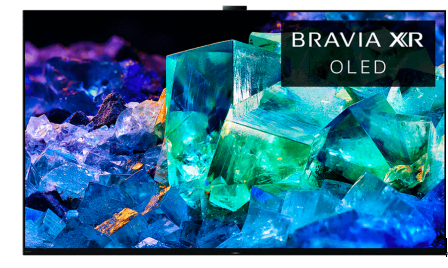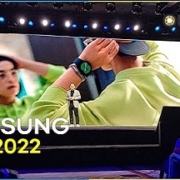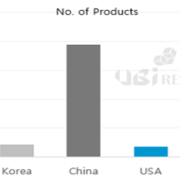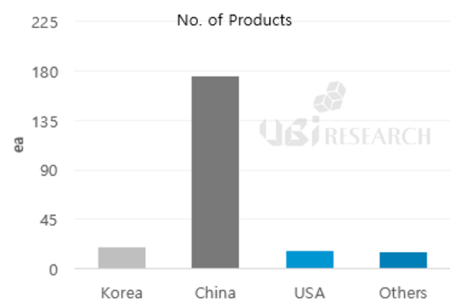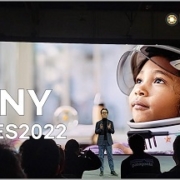Analysis of 65-inch Premium TV Price Trends in the First Quarter of 2022
We analyzed the prices of 65-inch TVs of Samsung Electronics’ QLED TVs, OLED TVs from LG Electronics and Sony, and LG Electronics’ QNED TVs until March 2022.
The models we investigated at Samsung Electronics were 4K high-end model QN90A, 4K entry-level models QN85A and QN80A, and 8K models QN800A and QN900A. The models at LG Electronics were OLED TVs A1, C1, and G1 models and QNED TVs QN90UP and QN99UP. The models at Sony Electronics were OLED TV XR65A80J and XR65A90J.
The prices of Samsung Electronics’ 4K models QN90A, QN85A, and QN80A were $2600, $2200, $1700, respectively and the 8K models QN900A and QN800A were $5000 and $3500, respectively. The launch prices of LG Electronics’ OLED TVs A1, C1, and G1 were $2000, $2300, and $3000, respectively while the QNED TVs QNED90UP and QNED99UP were $1600 and $2700, respectively. Sony’s OLED TVs XR65A80J and XR65A90J were priced at $2800 and $4000, respectively.
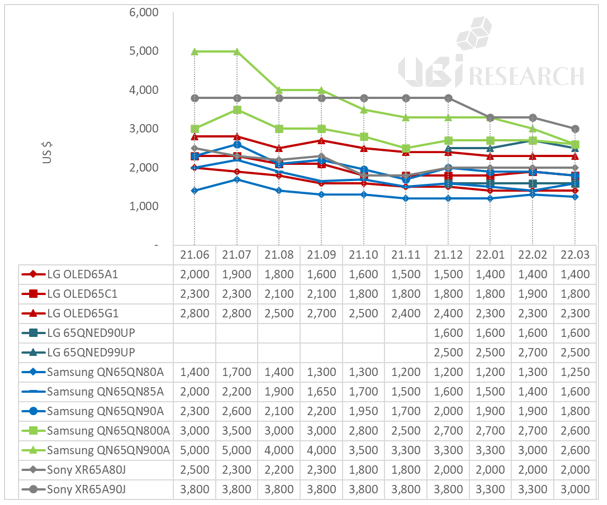
As of March, the highest-priced 65-inch premium TV model was Sony’s XR65A90J. The lowest-priced model was Samsung Electronics’ QN65QN80A.
The prices of most of Samsung Electronics’ products have been falling since December. As of March, Samsung Electronics’ 80A, 85A, and 90A models are priced at $150, $200, and $500 lower than LG Electronics’ A1, C1, and G1 models, respectively, to induce consumption.
The price of LG Electronics’ OLED A1 and G1 models did not change after the last $100 price reduction in January and the C1 model has maintained the price of $1800 since October 2021. The price of LG Electronics’ QNED90UP did not change and the QNED99UP maintained a price of $2500, down $200 from its launch price.
Sony’s XR65A80J, which had dropped to $1800 in October 2021, recovered to $2000 in December and has maintained it until March. The XR65A90J has been steadily dropping in price since December 2021, forming a price of $3000 in March.




